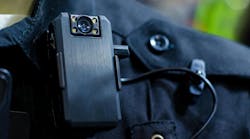By Thomas Chittum, Esq., and John J. Flynn, Esq.
Gun violence plagues America. It robs us of the potential in every life lost, costs billions in direct spending and lost prosperity, and the trauma it causes—to victims, witnesses, and communities—is immeasurable. People expect law enforcement to do something about it.
However, we do not simply want police to be fast and effective. We also want them to be fair, transparent, and collaborative with the communities they serve. We demand they employ constitutional practices while they do it. This challenge is driving the law enforcement profession to evolve and improve. Technology can help it get there.
Many police departments use ShotSpotter’s Acoustic Gunshot Detection system to protect areas that have historically suffered the highest levels of gun violence. This allows police to respond quickly to shootings and render life-saving aid to gunshot victims. It also provides them a starting point to investigate whether a crime has occurred and who is responsible. In short, ShotSpotter helps police save lives and solve crimes.
Lately, however, misinformed critics have attempted to falsely smear ShotSpotter’s technology as ineffective, claiming it raises constitutional concerns or contributes to injustice. They are wrong. ShotSpotter tells police the ‘what,’ ‘when,’ and ‘where’ of gunfire, but it does not and cannot tell them ‘who.’ Law enforcement must determine that through investigation.A typical police investigation following a ShotSpotter alert involves searching the immediate area for gunshot victims, spent casings, or bullet holes. Police may interview people they encounter in the area to determine if they saw or heard anything. They may knock on doors to locate witnesses and make sure everyone inside is safe. They often canvass the area to find surveillance cameras that captured the crime.
But police cannot investigate gun crimes they do not know about, and research shows 80% of gunfire is not reported to 911. That means police cannot investigate four out of every five shootings because they do not know about them. ShotSpotter fills that gap.
When police investigate gunfire, we rightly expect them to do so in a way that respects individual rights. The law forbids stopping and searching people at random. Before police can detain a person, the Constitution requires them to establish individualized, articulable reasonable suspicion the person is engaged in criminal activity.
Determinations of reasonable suspicion are not based on any single factor, but rather on what courts call a ‘totality of circumstances.’ ShotSpotter alerts are only one factor in making such a determination but when combined with other factors, like fast response time, suspect behavior, officer observations, or physical evidence, they are helpful for establishing reasonable suspicion. ShotSpotter simply provides police with one more investigative tool to meet the legal standards necessary to hold criminals accountable for their crimes.
Courts routinely uphold the reliability and evidentiary value of ShotSpotter alerts as a factor in making these determinations. Commentators who say differently have failed to do their research or are misrepresenting facts. ShotSpotter evidence has been used in hundreds of cases and survived dozens of challenges to its reliability and admissibility.Many critics attempt to draw an oversimplified and dishonest connection between police activity and ShotSpotter alerts, suggesting police can indiscriminately stop people based on an alert alone. Although many investigations begin with a ShotSpotter alert, subsequent police actions are based on many factors. Police can develop ample independent evidence, like witnesses describing shootings or pointing out offenders, finding spent casings on the ground or bullet holes in property, locating video of shootings, or observing suspects who attempt to flee when police arrive.
The law also allows police to have consensual contact with any person they encounter. When police respond to a ShotSpotter alert, they may ask potential witnesses if they saw or heard anything. That is the logical thing police do to investigate crimes. During those interactions, they might develop reasonable suspicion a person is not a witness at all but is instead the perpetrator of a crime. For instance, police may observe them attempt to conceal an illegal firearm.
Critics who twist the truth to attack and discourage the use of ShotSpotter mislead the public. Even worse, they risk making communities less safe and police less effective. Just when we need constitutional policing the most, these critics seek to deprive police of a vital tool that can help them meet our high expectations, restore community confidence and trust, and address the gun violence that plagues our nation.
About the Authors
Thomas Chittum retired as the Associate Deputy Director of the Bureau of Alcohol, Tobacco, Firearms and Explosives (ATF). He is a licensed attorney, adjunct law professor, and currently serves as ShotSpotter’s VP of Analytics and Forensic Services.
John J. Flynn is President of the National District Attorneys Association and is currently serving his second term as the 41st District Attorney of Erie County, NY.





